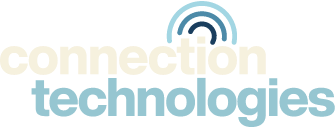1. Understanding cloud-based telephony security
Cloud-based telephony operates by routing voice communications over the internet, with the services hosted on third-party servers rather than on-premises equipment. While this offers advantages in terms of cost and flexibility, it also raises concerns regarding data privacy, cyberattacks, and service disruptions.
Security, in this case, is multi-faceted. It involves protecting voice data, user identities, and communication systems from unauthorised access, theft, or misuse. Here are the key elements involved in securing cloud-based telephony:
2. Encryption: the cornerstone of security
One of the most critical aspects of cloud-based telephony security is encryption. Without encryption, the data being transmitted, including voice calls, could be intercepted by malicious actors.
- End-to-End Encryption (E2EE): Many cloud telephony providers offer end-to-end encryption, ensuring that only the sender and receiver of the communication can access the content of the call. This prevents third parties, including hackers, from eavesdropping on conversations.
- Transport Layer Security (TLS) and Secure Real-Time Protocol (SRTP): These protocols help secure the transmission of data over the internet. TLS protects the signalling data (the process of establishing and ending calls), while SRTP encrypts the actual voice or video data.
Encryption is essential to ensuring that sensitive business conversations, customer data, and personal information remain secure while being transmitted over the cloud.
3. Authentication and access control
To prevent unauthorised access to your cloud telephony system, strong authentication measures must be in place. These measures verify the identity of users and devices before granting access.
- Multi-Factor Authentication (MFA): This is one of the most effective ways to safeguard accounts. It requires users to provide multiple forms of identification, such as a password, fingerprint scan, or one-time code sent to a mobile device, before accessing the system.
- Role-Based Access Control (RBAC): This limits access to certain features or data based on the user’s role within the organisation. For example, a receptionist may only have access to basic call functions, while a system administrator can configure security settings and access sensitive data.
By implementing these authentication and access control protocols, businesses can greatly reduce the risk of unauthorised users gaining access to their cloud-based telephony systems.
4. Vulnerability management and software updates
Like any software-based solution, cloud telephony systems are susceptible to vulnerabilities that cybercriminals may try to exploit. Providers need to implement robust vulnerability management practices, including regular patching and software updates to address known security flaws.
- Frequent Software Updates: Cloud telephony providers should release regular updates that fix security issues and improve overall system stability. Businesses must ensure that their providers stay on top of these updates.
- Penetration Testing: Conducting regular penetration testing (simulated cyberattacks) allows providers to identify vulnerabilities and fix them before they are exploited by hackers.
Keeping the system up-to-date and thoroughly tested for vulnerabilities is crucial for securing cloud-based telephony against cyberattacks.

5. Data privacy and compliance
Businesses using cloud-based telephony need to ensure that the system complies with local and international regulations, such as GDPR, HIPAA or PCI DSS, depending on the nature of the data being transmitted.
- Data Encryption: As mentioned earlier, encryption is key to ensuring that sensitive customer information is protected while in transit.
- Data Retention Policies: Businesses should be aware of how long call data is stored by their provider and ensure that this is in line with data privacy regulations. Some regulations require data to be deleted after a certain period.
- Compliance Certifications: When selecting a cloud-based telephony provider, businesses should verify that the provider complies with relevant regulations and holds certifications, such as ISO 27001, SOC 2, or PCI DSS, which ensure they follow industry-standard security practices.
Ensuring compliance with these regulations is crucial for businesses that handle sensitive customer data and want to avoid legal issues.
6. Distributed Denial of Service (DDoS) protection
Distributed Denial of Service (DDoS) attacks are a common concern for any online service, including cloud telephony. These attacks aim to overwhelm a server or network with traffic, making it impossible for legitimate users to access the service.
To mitigate the risks of DDoS attacks, many cloud telephony providers offer advanced DDoS protection solutions that detect and mitigate traffic surges before they can affect service quality. These solutions use machine learning algorithms and behaviour analysis to identify and block malicious traffic in real-time.
7. Disaster recovery and backup
No system is entirely immune to failure. Cloud telephony providers must have disaster recovery and backup measures in place to ensure that businesses can continue operating in case of an unexpected event.
- Redundancy: Providers often use redundant data centres, meaning that if one server fails, another can take over to maintain service continuity.
- Backup Systems: Regular backups of call data and configurations ensure that if the system experiences downtime or data loss, it can be quickly restored.
Businesses should verify that their cloud-based telephony provider has a solid disaster recovery plan and redundancy measures in place.
8. Security monitoring and threat detection
Continuous monitoring of network traffic, system activity, and user behaviour can help detect potential security threats before they escalate into full-blown attacks. Cloud telephony providers often use security monitoring tools that track for signs of unusual or malicious activity, such as brute force attacks, unauthorised access attempts, or data exfiltration.
Some advanced security systems also use artificial intelligence and machine learning to analyse patterns and predict potential threats, allowing providers to respond to issues proactively.
Is cloud-based telephony secure?
Cloud-based telephony offers businesses a cost-effective and flexible communication solution, but like any online service, it does present security challenges. By choosing a reputable provider that implements strong encryption, robust authentication, regular software updates, compliance with data privacy laws, and continuous security monitoring, businesses can enjoy the benefits of cloud telephony without compromising on security.
As with any technology, it is essential to stay informed and work with your provider to ensure that your communication systems are secure and meet your organisation’s specific needs. While no system can ever be 100% secure, cloud-based telephony is becoming increasingly secure and is a safe choice for most businesses when proper security measures are in place.

